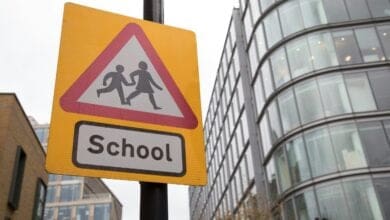University progression rates fall for second year, DfE finds
Independent pupils were more than twice as likely to enter high-tariff universities – 60.4% compared with 28.2% from state schools

Register to get 1 free article
Reveal the article below by registering for our email newsletter.
Want unlimited access? View Plans
Already have an account? Sign in
The proportion of state school pupils progressing to university by age 19 has fallen for the second year running, from 46.9% to 45.8% in 2023-24, according to official figures released by the Department for Education.
Figures show that entry to high-tariff universities also declined during the period, from 15.3% to 12.8%.
Progression rates for pupils eligible for free school meals dropped slightly to 28.9%, widening the gap with their peers to 20.1%. Only 4.9% of free school meal pupils went on to high-tariff universities, compared with 9.4% of their better-off peers.
Geographical differences also remain marked, with more than half of free school meal pupils in inner London entering higher education, compared with fewer than one in five in the South West. In London, 10.2% progressed to high-tariff universities – more than three times the rate in the East Midlands.
Disadvantaged pupils, defined as those eligible for free school meals at age 15 or in the preceding six years, saw progression into higher education fall to 31.2% from 31.9%. By contrast, more than half of other pupils continued to higher education.
Progression also varied sharply by ethnicity, as Asian pupils were the most likely to enter university (67.4%), followed by Black pupils (63.3%), those of mixed heritage (50.2%) and White pupils (40.5%). Male White pupils eligible for free school meals had the lowest progression rate at 13.8%.
Among A-level students, the overall progression rate fell from 82.8% to 80.6%. For state school pupils it dropped to 79.7%, while 86.9% of independent school pupils went on to higher education. Independent pupils were more than twice as likely to enter high-tariff universities – 60.4% compared with 28.2% from state schools.
Sarah Hannafin, head of policy at the school leaders’ union NAHT, said: “Children’s educational attainment and life chances should not be constrained by their family’s means or where they live. That said, funding cuts under the previous government to schools and community services were followed by the pandemic, high inflation and cost-of-living pressures – and these things often disproportionately affect families from poorer backgrounds and their ability to access support.
“While on the face of it these figures indicate that this remains a real issue, they aren’t supported by any analysis of why some young people are not progressing to university and it’s important to remember that higher education isn’t the only route to a fulfilling career for young people.”
She added: “The education secretary’s focus on closing the disadvantage gap is welcome. However, if real inroads are to be made we need not only increased funding for schools, but also more government investment in services like social care and mental health and tangible action to tackle poverty.”






